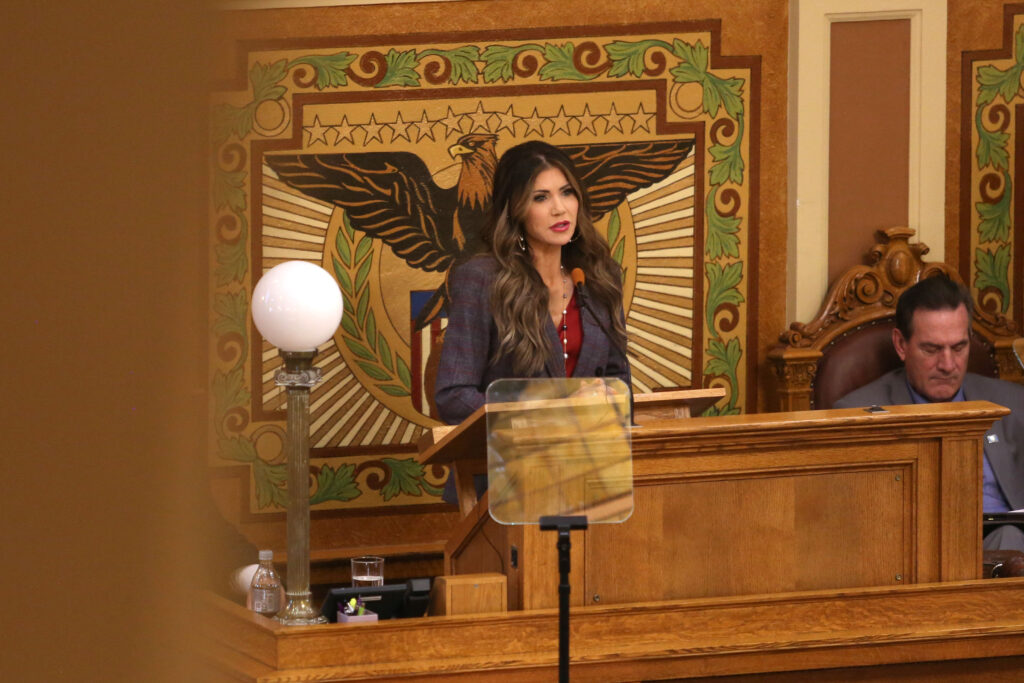
Makenzie Huber/South Dakota Searchlight
PIERRE — The total increase in state funding for schools is 26% since Gov. Kristi Noem took office in 2019, she said Tuesday during her annual budget address; meanwhile, statistics from the same period show average South Dakota teacher pay has increased about 10%.
That’s left South Dakota near the bottom in teacher salaries compared to the rest of the country. South Dakota currently ranks 49th in the nation – roughly $16,000 below the national average. South Dakota teachers make less than they did when Noem took office, when factoring in inflation.
“Why would we continue to send money to school administrators and school boards when they don’t pass it on to teachers?” Noem said.
State law requires funding for K-12 schools to increase each year by at least 3% or the rate of inflation – whichever is lower. The last two years, Noem and legislators have approved 6% and 7% increases to compete with inflation. Each time, she encouraged school districts to put those raises toward teacher pay, she said Tuesday.
Noem is proposing a 4% increase for the next budget – ahead of current inflation.
The Legislature in 2016 required that school district teacher compensation each year through 2024 be higher than the district’s average compensation in 2017, or else the district’s state aid would be reduced. All South Dakota school districts met the increased teacher pay requirement this year.
The aim of the 2016 legislation was to increase teacher salaries in the state both as a recognition of educators’ hard work and a greater incentive to draw people to, and keep people in, the field, said South Dakota Education Secretary Joseph Graves in an emailed statement.
“The Legislature and the governor provided the money, but the funds, as a percentage of overall school budgets, did not proportionately make their way into teacher salaries,” Graves said. “They simply did not honor the annual increases provided by the state.”
Rep. Linda Duba, D-Sioux Falls and a former educator, said recent state funding increases are important since the state “fell behind” by “not giving decent increases” in the past.

However, school boards are obligated to focus on more than increasing teacher pay in their budgets, Duba added. That includes school bus drivers and food service workers, along with paying for rising food, supply and transportation costs – everything that “makes a school district and a school themselves successful,” she said.
“So when a school board sits down to do its budget, it has to look across the board – we have to focus on teacher pay, but we have to elevate all of that and not turn a blind eye to it in state government,” Duba added.
Noem announced she’s working with Graves to “bring some ideas” to the Legislature about how to “bridge this gap” between the increase in state funding and the increase in teacher pay.
Graves added, “The DOE is working on accountability measures to ensure that money meant for teachers goes to teachers.”
Neither Noem nor Graves provided further details on those measures.
“Our teachers do incredible things for our kids – and they deserve a paycheck that reflects that,” Noem said.
